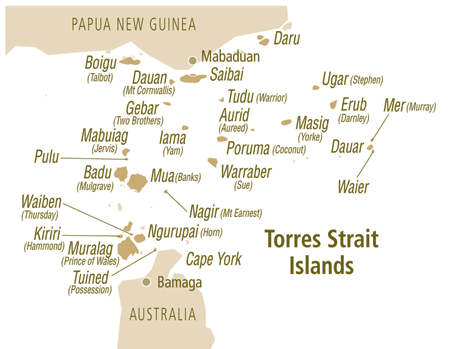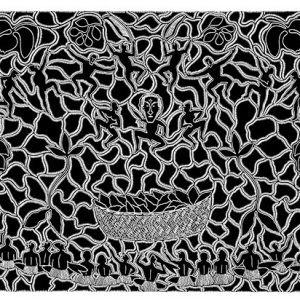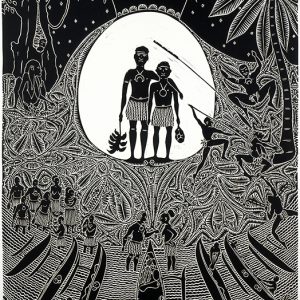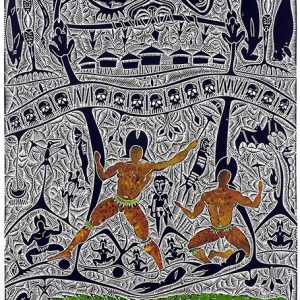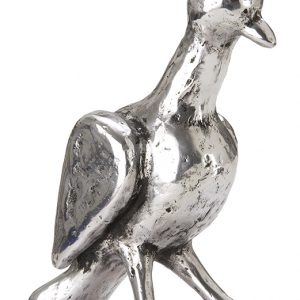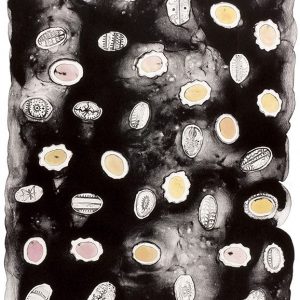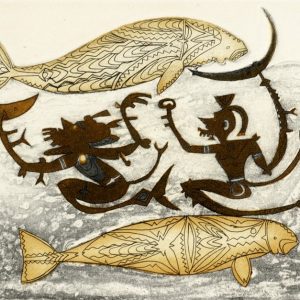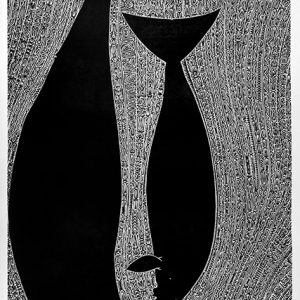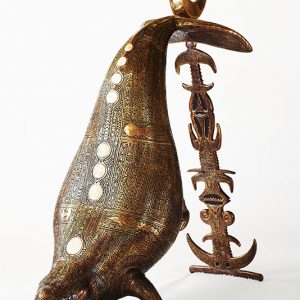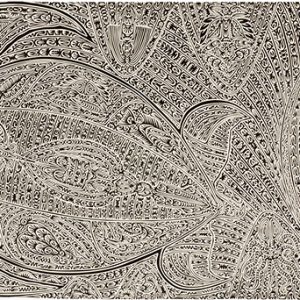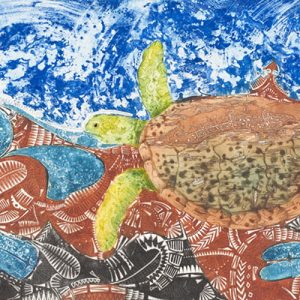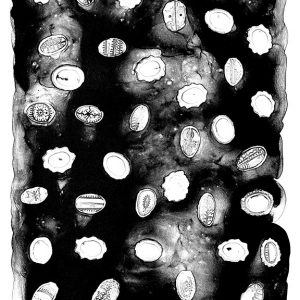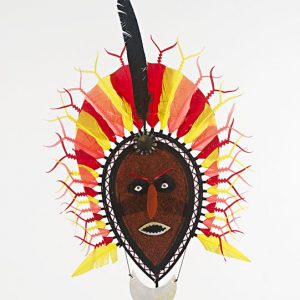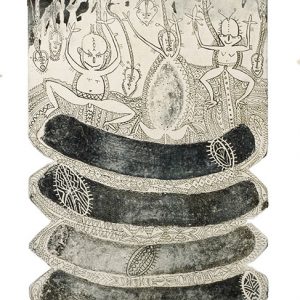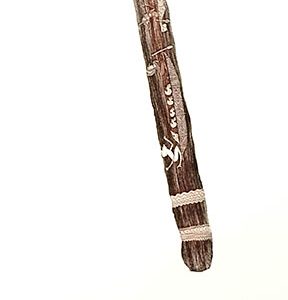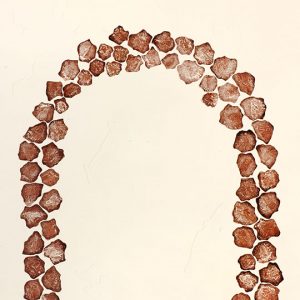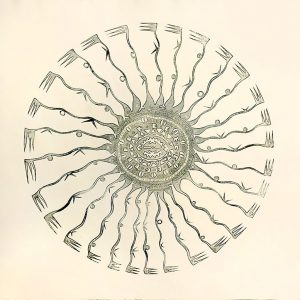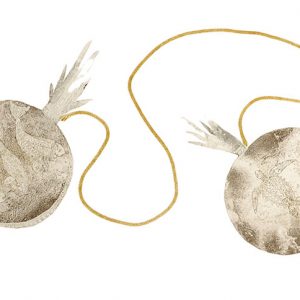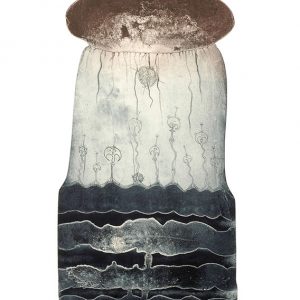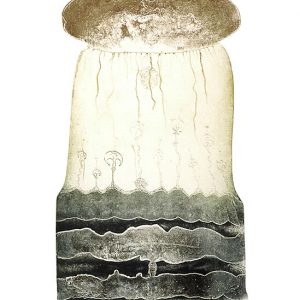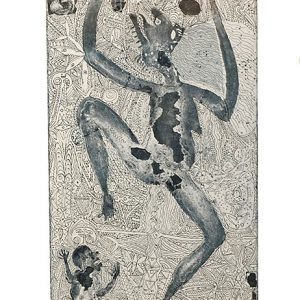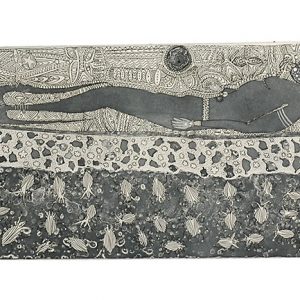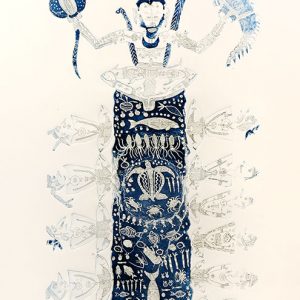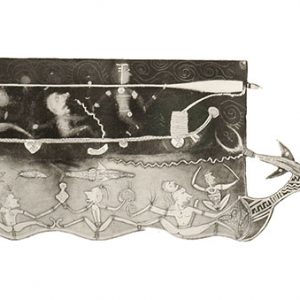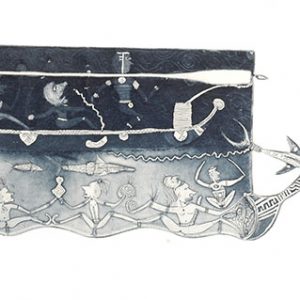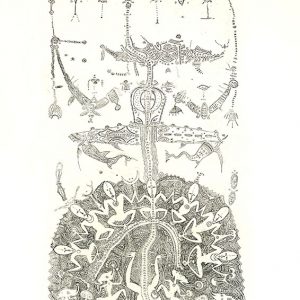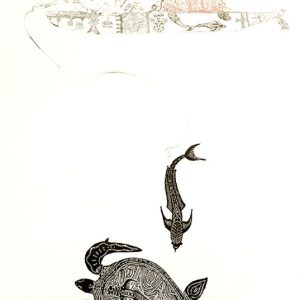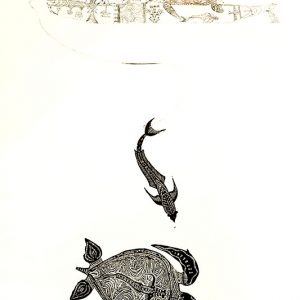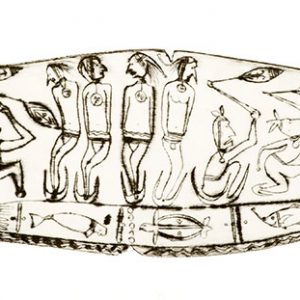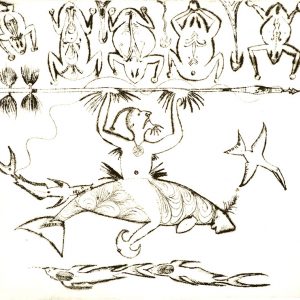Material Culture – A Recent History
The Torres Straits were named after the first European explorer in the region Luis Vaes de Torres who sailed through the Strait in 1606. He was followed by Captain James Cook who made claim to the area on behalf of the British Crown on what is now known as Bedanug (Posession Island). Cook (1768-71), Bligh and Flinders charted the reef waters prior to colonial expansion in to the region. From the 1860’s European, Polynesian, Malaysian and Japanese traders (amongst others) dived and collected on the reefs and islands for sandalwood, turtle shell, pearl and beche de mer.
By 1880 the entire Torres Straits had been converted to Christianity during, what became known in the islands, as ‘the Coming of the Light’ and as the islanders belief systems changed, so too did their material culture. Artefacts formerly used in ceremonies and rituals were no longer relevant. For the new Christian ceremonies artefacts changed to wooden crucifixes, candlesticks and other objects that indigenised Christian practice.6 so too did the dance costumes. In many cases the missionaries forbade the production and use of traditional artefacts. The production of ceremonial icons was tabooed and eventually ceased.7
The collecting impulse amongst anthropologists, missionaries and museums was zealous and continued unabated until very little material culture remained. All of the pieces collected between 1874 and 1888 by missionary Samuel McFarlane, for instance, sold at auction in London and were divided between three European museums, so that this precious connection to the islander’s past now resides in major cities from London to Dresden, from St. Petersburg to Dublin, as well as a number of mainland Australian museums.8
By far the most prodigious collector was Alfred Cort Haddon whose zeal and scholarship was legendary. In his book published in 1932 he relates his own story of purchasing a dojom (stone effigy), used for the rain making ceremony on the island of Mer, off a man named Gasu. The following day islanders objected to its purchase as it would no longer be available when needed. Haddon recalled, ‘I must confess I felt sorry for Gasu, when he regretted his importunity and wanted his dojom back, but the collecting instinct was stronger than pure sentiment, and I had to inform him that it was by then too late.’ 9
By 1904 the Straits were covered by the draconian powers of the Aborigines Protection Act. However in 1899, due to the work of John Douglas, a process of electing island councils was initiated aimed at loosening the stranglehold of the missionary influence. In the Western islands in particular, where the lifestyle tended toward the nomadic, the council system thrived. 10 In March 2008 the fifteen Torres Strait Islander Councils were amalgamated into a single body to form a Torres Strait Island Regional Council. The Queensland Government is enforcing these planned mergers in the interest of financial viability, accountability and transparency of local Governments throughout the State. Many people in the Islands believe that this move has failed to address the unique position and cultural issues of the Torres Strait.
Throughout the early 20th century Torres Strait Islander men found work in the pearling industry while others sought work on the sugar plantations and the railways of North Queensland. Their success prompted a continuing exodus of islanders to the mainland and the establishment over time of a larger Torres Strait Islander community on the mainland than in the islands themselves.11
Apart from weaving and the production of ephemeral items for particular festive occasions, Torres Strait Islander culture has, during the 20th century, been largely restricted to dance and song. However in the late 1960’s and early 1970’s a large group of visual works on paper were produced by islander artists. These had been commissioned by Margaret Lawrie, who was employed by the Queensland State Library. She travelled widely throughout the Torres Straits, supplying men with watercolour paints and paper, and encouraging, collecting and recording their stories to accompany the artworks.12 The paintings visualised aspects of traditional culture and creation myths and legends. The individual paintings however, illustrated only one particular point or incident in much longer narratives and it was not until Dennis Nona began printmaking, as a young art student at Cairns TAFE college in the late 1980’s, that a new style of visual narrative was created which would influence a whole new generation of islander artists.
1 2006 Census
2 Victor McGrath p101, in Ilan Pasin-this is our way, Torres Strait Art, Cairns Regional Gallery Publication, T.Mosby (Ed), 1998
3 P. Sutton (Ed), Languages of Cape York,AIAS, 1976
4 Tom Mosby in Ilan Pasin, pp27-28
5 Josephine Flood, Archaeology of the Dreamtime-the story of Prehistoric Australia and its people, William Collins, Sydney, 1983 p230
6 Dr. Helen Lawrence in Ilan Pasin p59
7 Brian Robinson in Oxford Companion to Aboriginal Art and Culture p169
8 Herle and Philp, in Oxford Companion to Aboriginal Art and Culture, p 157
9 A.C.Haddon, Head-Hunters: Black, White and Brown, Watts, London, 1932, p26
10 Jeremy Beckett, Torres Strait Islanders: Custom and Colonialism, Cambridge University Press, Cambridge, 1987, p45
11 Beckett pp202-209
12 Margaret Lawrie, Myths and Legends of the Torres Strait, The University of Queensland Press, Queensland, 1970

